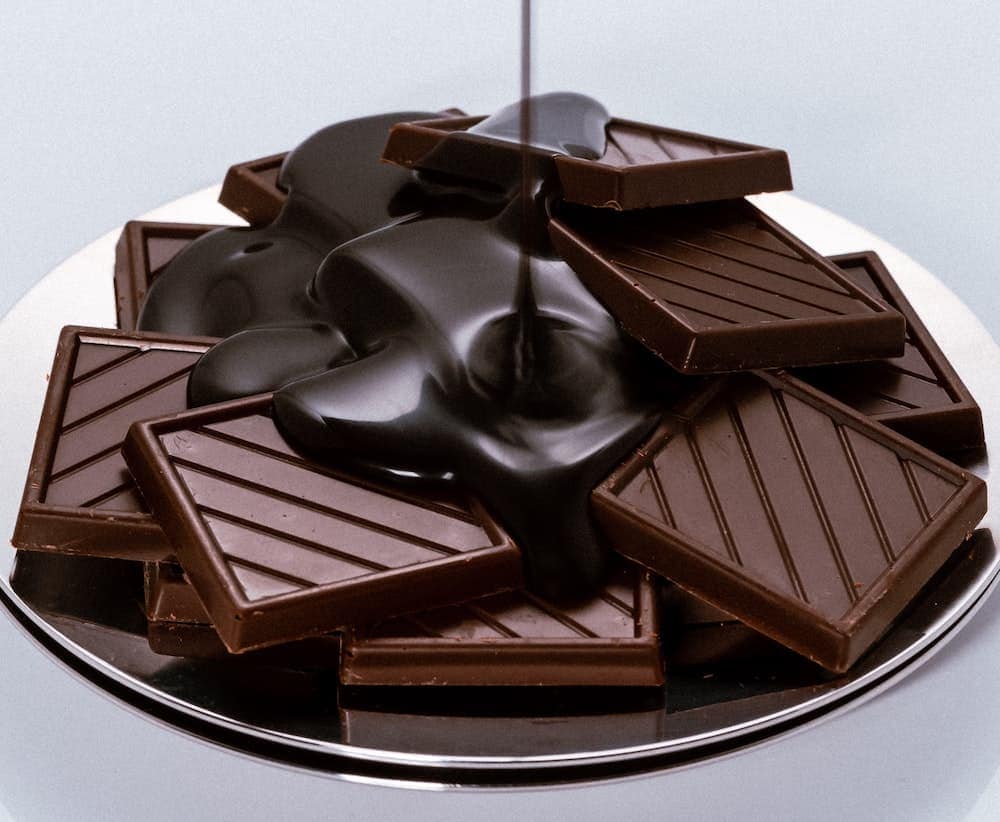
[Image above] Tempering chocolate may have just gotten easier thanks to new research at the University of Guelph. Credit: Universal Eye, Unsplash
Though summer does not technically end until September 22, this past Labor Day weekend marked the unofficial end in the United States.
I know I’m not the only one looking forward to cooler days after a summer of record heat. But one of the things I’m looking forward to most—and something I’m already seeing in stores—is the opening of the chocolate floodgates as Halloween pokes its head through the door.
Chocolate is both a favorite dessert and science topic for us here at CTT. Even though people have consumed the bitter treat in drink form for centuries—and in its sugary bar form for more than a hundred years—food scientists continue finding new ways to improve chocolate’s taste and appearance.
One part of the production process that scientists struggle to improve, however, is tempering the chocolate. There are six different ways in which chocolate can crystallize, and the tempering process involves heating and cooling the chocolate in just the right way to ensure it crystallizes in the desirable form V.
See more details about tempering chocolate in the video below.

Credit: Monarch Media, YouTube
Much research on tempering chocolate has focused on the role of triacylglycerols in the crystallization process. Triacylglycerols are the main chemical component of cocoa butter, which is one of the main ingredients in chocolate.
In contrast, very little research has taken place on the effects that minor cocoa butter components have on crystallization behavior, such as monoacylglycerols, diacylglycerols, free fatty acids, and phospholipids. The studies that do exist suggest these components can promote or block crystal nucleation and growth.
Thus, “If minor components can be employed effectively to induce the formation of specific [cocoa butter] polymorphs, as well as induce the formation of an optimal chocolate microstructure with desirable properties, the need for tempering chocolate could be reduced or eliminated,” researchers write in a recent open-access study.
The researchers come from the University of Guelph in Canada and are led by Alejandro Marangoni, professor and Tier I Canada Research Chair in Food, Health, and Aging. In their study, the researchers added various minor components one by one into refined cocoa butter to determine each component’s role in crystallization.
Of the minor components tested, they discovered that phospholipids had a huge effect.
“With just a pinch of phospholipids added to the cocoa butter—achieving a weight concentration of 0.1 percent of the chocolate’s total—the mixture rapidly crystallized into the elusive, melt-in-the-mouth texture. The process required a single cooling to 20°Celsius rather than multiple heating and cooling cycles as tempering typically demands,” a ScienceNews article explains.
In an Inside Science article, Marangoni says this discovery could be a boon to small- and medium-sized manufacturers by allowing them to scale up the tempering, “which would mean reducing costs and using less energy.”
“All the companies are trying to get better in terms of carbon footprint, and [our method of tempering] will consume a lot less energy,” he says.
The open-access article, published in Nature Communications, is “Tempering of cocoa butter and chocolate using minor lipidic components” (DOI: 10.1038/s41467-021-25206-1).
In addition to its taste and fascinating material mechanics, another reason I love chocolate is because it can serve as an accessible analogy for teaching other scientific concepts, as ACerS student member Rishabh Kundu demonstrates on his blog.
Kundu started his blog last summer “to expose young minds to the vast and impressive world of materials, especially ceramics,” he explains in an email. He writes many of the articles himself, but he also features contributed posts by other students and professors.
See how he used chocolate bars to explain the science of materials fracture, and how University of Ottawa associate professor Eva Hemmer used chocolate chip cookies to explain the science of upconverting and near-infrared emitting nanoparticles.
Author
Lisa McDonald
CTT Categories
- Education


